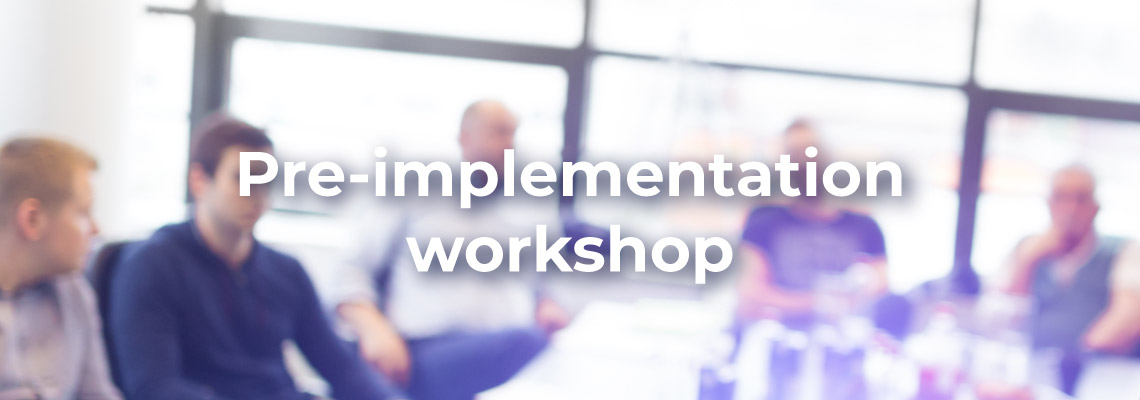Pre-implementation workshop as a key to a successful project
Proper planning is critical to the success of any project. In the case of an e-commerce platform implementation (e.g. like Magento), the initial phase – especially the pre-implementation phase – is the key to its continued success.

Aim and purpose of the workshop
The primary goal of the workshop is to make a fundamental shift in the project. We don’t just want to talk, we want to act. The main objectives of the workshop therefore include:
- Getting the project preparations moving
- Clarifying the requirements for the new platform
- Creating materials to define the content of the project
- Linking business benefits and technology
A secondary objective is to establish the complexity of the project. And it’s not just about the budget. It is also about the time frame and the resources needed. We need to understand exactly how many people and for how long will be needed to successfully complete the project.
A tertiary goal, by the way, is mutual understanding. Yes, it’s like a first date between you (as the customer) and us (as the contractor) where both parties are looking for compatibility and a common language. The goal is to get done as much as possible in the shortest possible time, which is why this is an intensive workshop.
Expected outcomes
Detailed perception of the client’s situation
One of the first and most important outcomes is a detailed analysis of your situation. Not only will we have written down the answers to all of our common questions, but we will also add consulting “business hints” that may open your eyes to new opportunities or dangers.
Design of the solution architecture
A comprehensive solution architecture design is also an integral part of the workshop. This design will be the basis for your key product decisions, backlog creation and also for estimating the complexity and difficulty of the entire project.
Roadmap of the integration environment
The following part describes the roadmap of the integration environment, including recommendations for integration strategy and infrastructure solutions. This roadmap will give you a clear idea of how your new platform will interact with existing systems and what technologies will be needed to ensure smooth operation.
Process analysis
Process analysis is another critical point. Whether in the form of diagrams or detailed textual descriptions, we will be clear on what the critical business points are, which systems “fit” where and which processes will need special attention. This is essential not only for solution design and product decisions, but also as a basis for the backlog. Process analysis ensures that when a new project is launched, processes are either correctly maintained or transformed into a new and efficient state.
Visualization of requirements and project phasing
Last but not least, we create a requirements visualization and prioritize them into an MVP (Minimum Viable Product). This will give us a clear project phasing, which will make it easier to manage and implement.
So the outputs of this workshop are not just “nice-to-haves”, but are critical steps that will help you and us save time and reduce risks.

How it works: the anatomy of a successful workshop
Now that you know the expected outcomes, you may be wondering how everything actually happens. It may be an intense experience, but it’s an adventure that we’ll all share together.
Time range
First, let’s talk about time. The workshop will last between 2 and 4 working days (MD), depending on the complexity of the topics we need to discuss.
Face-to-face meetings
Typically, we will meet in person in a conference room, either intensively all day or we split our agenda into 4 afternoon sessions. Each model has its advantages, and we adapt to your needs and expectations.
Role of the facilitator
Equally important is the role of our experienced facilitator, who is tasked with moderating the discussion, keeping the pace and ensuring that we stick to the plan. In short, no straying from the topic, just clear direction.
Validating expectations
At the beginning of each workshop, it is crucial to check mutual expectations. The client’s questions and our topics are written on the board in advance so we are clear on priorities.
Parking lot technique
If we come across a topic that we can’t fully resolve at the moment, we use the parking lot technique. We will ‘park’ this topic and return to it as soon as we have more information or time.
AHA moments and retrospective
At the end of each day we look at AHA moments – those breakthroughs that help us see things in a new light. And finally, we do a short retrospective: each participant shares what we should start doing, stop doing, and what’s working and we want to continue doing to be even more effective the next day.
Conclusion
A pre-implementation workshop is not a luxury, but a necessary step to successfully complete an e-commerce project. It provides a clear structure, defines goals, outcomes and requirements, and most importantly – reduces risks. It is a platform where business and technology come together, where a common language is created and where key “AHA moments” are uncovered. Ultimately, it’s an investment that can save you time and resources in the long run.
In the next article, we’ll look more specifically at the example of a pre-implementation workshop.
